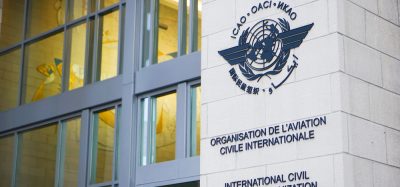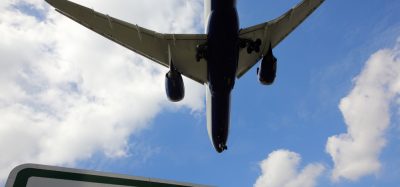747-8 and the airport
- Like
- Digg
- Del
- Tumblr
- VKontakte
- Buffer
- Love This
- Odnoklassniki
- Meneame
- Blogger
- Amazon
- Yahoo Mail
- Gmail
- AOL
- Newsvine
- HackerNews
- Evernote
- MySpace
- Mail.ru
- Viadeo
- Line
- Comments
- Yummly
- SMS
- Viber
- Telegram
- Subscribe
- Skype
- Facebook Messenger
- Kakao
- LiveJournal
- Yammer
- Edgar
- Fintel
- Mix
- Instapaper
- Copy Link
Posted: 7 December 2012 | Karen Dix-Colony, Lead Engineer, Product Department, Boeing Airport Technology | No comments yet
Airport Council International’s (ACI) recent announcement that year-onyear passenger traffic has grown by five per cent has, for now, caused some optimism within the industry. Unfortunately, such news is rare as the ongoing economic uncertainties continue to plague passenger numbers in Europe and North America.
However, one of the aviation industry’s many strengths is collaboration. Associations, suppliers, airlines and airports are constantly pushing the boundaries, even in times of financial downturn. It is encouraging therefore, to hear about the historical and essential alliance formed between airports and two of the world’s major aircraft manufacturers; Airbus and Boeing.
Earlier in 2012, International Airport Review (issue 3 2012) explored the collaboration between Airbus’ A380 and the airports’ acceptance of the aircraft. In this editorial we look at the integration of Boeing’s 747-8 wide-body jet airliner into the airport community with invaluable comment from Karen Dix-Colony, Lead Engineer of Product Development at the Boeing Airport Technology Group and a key figure in the aircraft’s successful development and integration within airports.
Airport Council International’s (ACI) recent announcement that year-onyear passenger traffic has grown by five per cent has, for now, caused some optimism within the industry. Unfortunately, such news is rare as the ongoing economic uncertainties continue to plague passenger numbers in Europe and North America.
However, one of the aviation industry’s many strengths is collaboration. Associations, suppliers, airlines and airports are constantly pushing the boundaries, even in times of financial downturn. It is encouraging therefore, to hear about the historical and essential alliance formed between airports and two of the world’s major aircraft manufacturers; Airbus and Boeing.
Earlier in 2012, International Airport Review (issue 3 2012) explored the collaboration between Airbus’ A380 and the airports’ acceptance of the aircraft. In this editorial we look at the integration of Boeing’s 747-8 wide-body jet airliner into the airport community with invaluable comment from Karen Dix-Colony, Lead Engineer of Product Development at the Boeing Airport Technology Group and a key figure in the aircraft’s successful development and integration within airports.
With over 200 airports approved for scheduled operations, and 150 established as en-route ‘alternatives’, the aircraft quickly found its place within the industry. Of course, Boeing’s aircraft was always going to draw comparisons with the A380, particularly when the super jet-liner came into operation: “Both 747-8 freighter and inter-continental [passenger] aircraft have conducted revenue service into 72 airports in the first 10 months of operation,” Dix-Colony said. “This is in comparison with the A380, which has been operating for five years and currently operates into 30 airports. However, this was due primarily to the 747-8 having a swift freighter capability within the airports, which is actually down to the very nature of cargo operations, and also the fact that our aircraft was already slightly more compatible to airport infrastructure than the A380.”
However, the integration with the majority of airports wasn’t as straightforward as Boeing would have liked: “I wouldn’t necessarily classify [the process] as easy,” Dix-Colony said. “Some [airports] tended to be a little bit easier than others. There were times when we had a lot of success all at once time and then there were times when we were struggling to bring in one more approval.”
Despite this, it seems that airports were generally very welcoming of the aircraft and keen to facilitate a productive collaboration with Boeing to incorporate it into their operations. The only slight reluctance came from those 150 ‘alternate’ airports; as Dix-Colony explains: “These airports obviously can’t count on the revenue that the aircraft would ordinarily bring so it is hard for them to justify expenses and resources. Meanwhile, airports that were ‘designated’ or those airports that already had scheduled operations, were extremely willing to the integration.”
Overall, there were very little airport compatibility changes for the 747-8. Unlike the A380, which had to incorporate a new tow tractor and upper-deck catering truck, Boeing’s aircraft had the same dimensions as its predecessor the 747-400, that is the tail height, engine span and within its landing gear. The 747-8’s vast 70 metre wing-span however, meant that Dix-Colony and Boeing required a sign-off from the authorities: “One of the large efforts that the Boeing company undertook was to seek and receive approval from the FAA and IATA for operations on a 45 metre runway, Dix-Colony said. “Because of the wing-span the aircraft was filed within the Code F design category which would normally require a 60 metre runway. Within our flight plan we analysed the deviation in value numbers from over 2,000 departures and landings. Eventually we were able to prove to the FAA and IATA that the 747-8 could indeed operate safely within a Code E design category on a 45 metre runway.”
Much like the Airbus’ A380 working group, Boeing set up a similar collaboration to assist with the integration of the aircraft into the world’s airports. The Boeing 747-8 Airport Compatibility Group (BACG) was set-up in partnership with Airports Council International (ACI) World, to oversee a set of minimum separation criteria based on ICAO’s documentation on conducting a safety study. It was at this time that Boeing began its work with the FAA and then two years later, individual meetings began with the various Civil Aviation Authorities and airports. It was the working group however, that Dix-Colony found most invaluable to the compatibility process: “It was extremely important,” she says. “We had a number of countries that joined in with the process at that stage as well as a number of airports. The whole set-up encouraged a follow-on process from other countries that didn’t have such a plan. For example, both China and Brazil developed a similar document based on the findings and conclusions of the BACG.”
The aircraft brings a range of benefits to an airport, not only in passenger movements but also environmentally and in terms of noise pollution, something that Dix-Colony is fully aware and proud of: “There are improved emissions and the aircraft’s noise footprint is contained within the airport’s geometry so our airline operators are also able to operate within the evening.”
Airports aim to increase their passenger numbers and the integration of the 747-8 has and will contribute to this. With little airport operation compatibility, Boeing has created a jet-liner that is immediately capable of enhancing an airport’s ability to move cargo and passengers on a much larger scale, something that may just bear fruit in the next ACI figures.
About the author
Karen Dix-Colony is the Lead Engineer in the Product Develop – ment Department of the Boeing Airport Technology group. Responsi bilities include working with engineering to influence design of new and derivative aircraft so that they ‘fit’ into today’s airports. When aerodynamics are at odds with airports’ compatibility, Karen works with the world’s airports and Civil Aviation Authorities to ensure the proper plans and changes are in place so that aircraft can operate safely and economically with little or no impact to airport capacity. Karen graduated from the University of Washington with a Bachelor’s Degree in Civil Engineering and has been with Boeing for 15 years, 13 of those in the Airport Technology group.
















